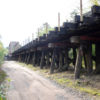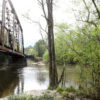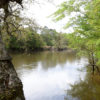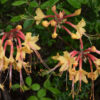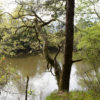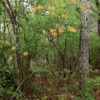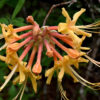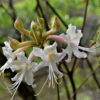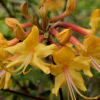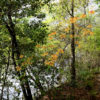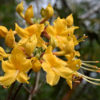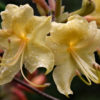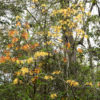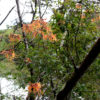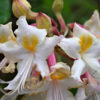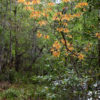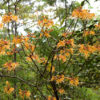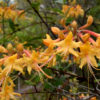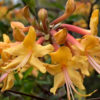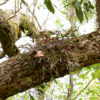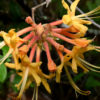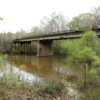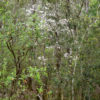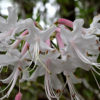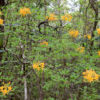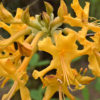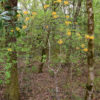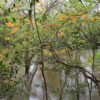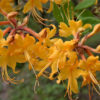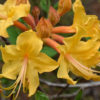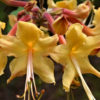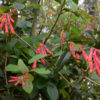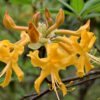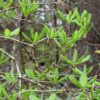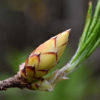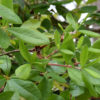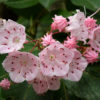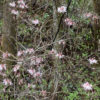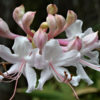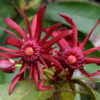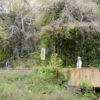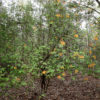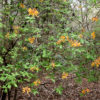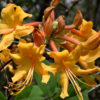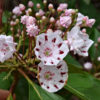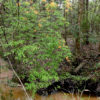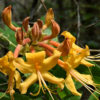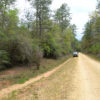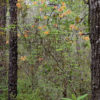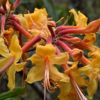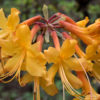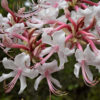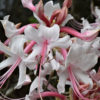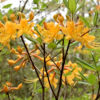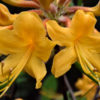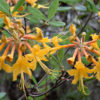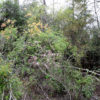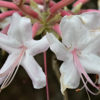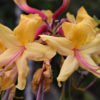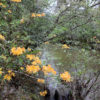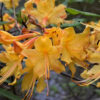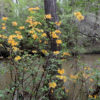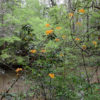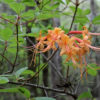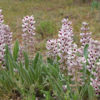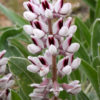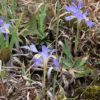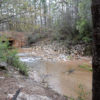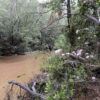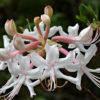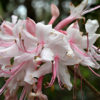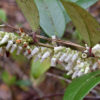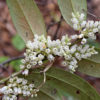On this rainy day Ron Miller, John & Sally Perkins and I decided to explore some areas of the upper Yellow River from land. This is primarily where R. austrinum and R. canescens grow, and more rarely we found R. serrulatum. The “roads” were mostly just dirt roads, some of which were difficult to navigate.
We started in Florida in Okaloosa Co. at a railroad bridge near Milligan. I had been here before on 31.03.2018 (see there), but at that time spring had been much more advanced and we had only seen R. austrinum from the yellow color spectrum. Today we also found very few clones from the white to pink spectrum. Along the Yellow River white to pink R. austrinum tend to bloom a little earlier compared to yellow R. austrinum.
Our next stop was at Skinner’s Bridge, over which CR 2 crosses the Yellow River. Here we found both R. canescens and R. austrinum. The latter was blooming only yellow here (and all the rest of the day). Nearby on a small slope at Oak Grove we also found R. serrulatum. The forest road from there about 2km (1.2M) further north, at a nameless creek there was again R. canescens, a very nice pink flowering Kalmia latifolia and Illicium floridanum with its pretty red star shaped flowers. At a second nameless creek another 4km further north we found R. austrinum again. Kalmia latifolia had pretty spotted flowers here.
After crossing the Alabama border, we soon reached the Givens Bridge area. We continued to stay on the west side of the Yellow River and drove north on unpaved Sanders Road. Over the next 3km (1.9M) we stopped three times to explore the area. There was a lot of R. austrinum here at each stop and R. canescens could be seen twice as well.
We then continued north for about 9km (5.6M) and reached the bridge across Five Runs Creek, a tributary of the Yellow River. Here we could see again some R. austrinum along the river.
We then left the Yellow River basin and drove a longer distance west to reach the Conecuh River at Roberts (AL, Escambia Co.). On the hills above the river there were interesting perennials to discover in two places: Lupinus aridorum, one of the most beautiful lupines I have ever seen, and Iris verna, the spring iris with its bright blue flowers. At the bridge over Mayo Mill Creek we stopped for the last time today to look at the R. canescens blooming there.

